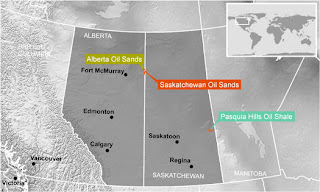Bloomberg has an article about how foreign investors are buying up Canadian gas projects recently, rather than oil sands projects. It notes three of the five biggest energy acquisitions this year have been gas deals, adding to $9.8 billion. The latest example is for ExxonMobil's $2.9 billion acquisition of Celtic Exploration, a gas producer in the Montney and Duvernay.
The apparent reason for this turnaround? LNG plants scheduled to start coming on over the next few years. Gas remains cheap, and bitumen remains expensive. Read on!





